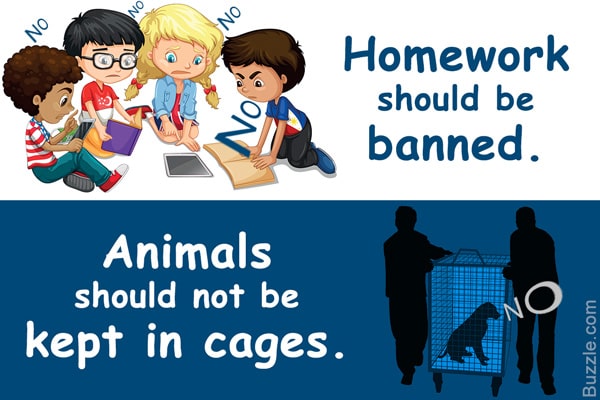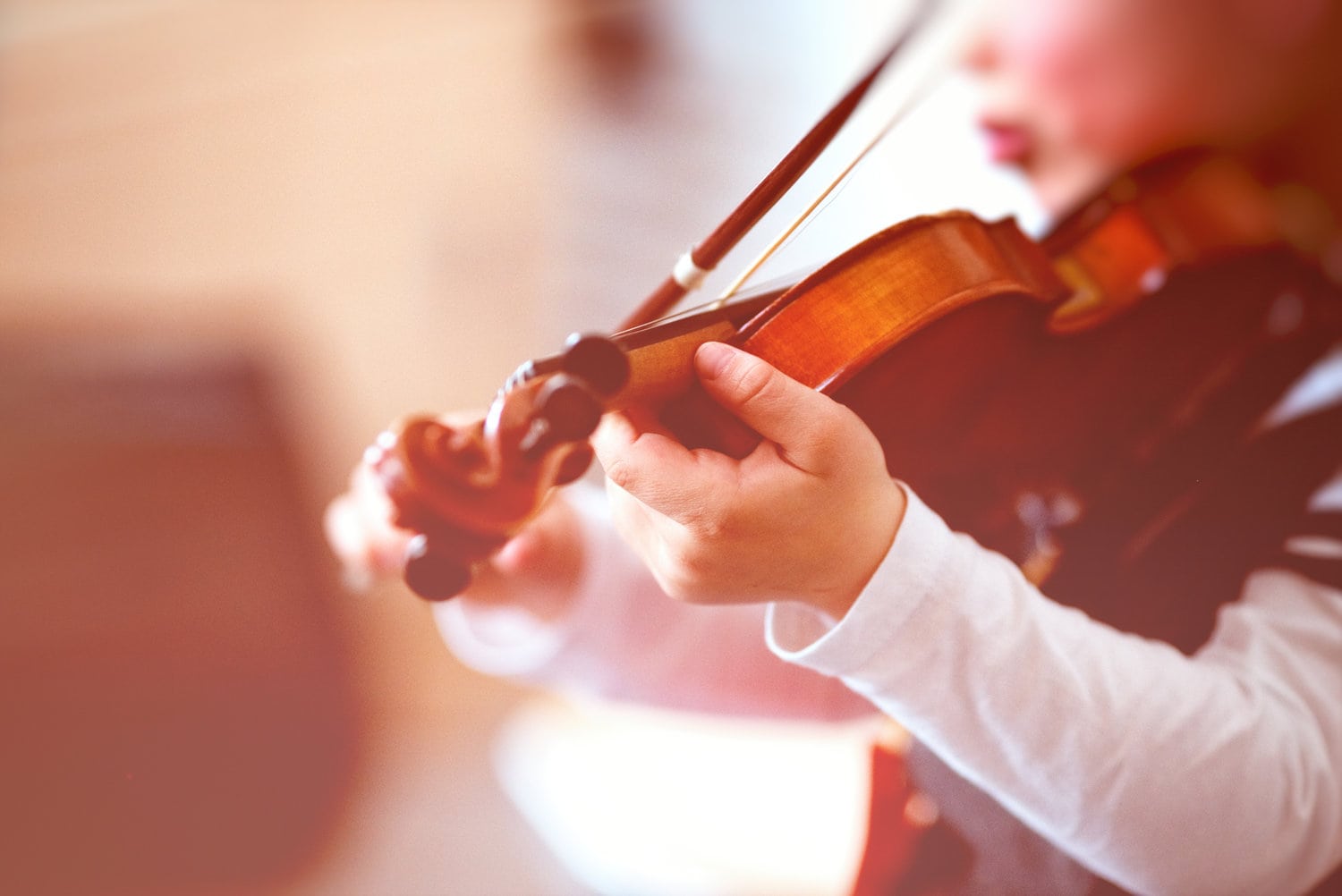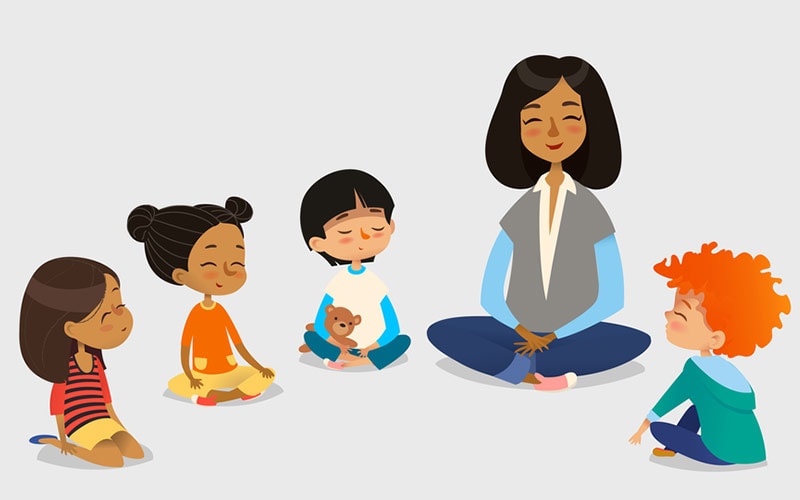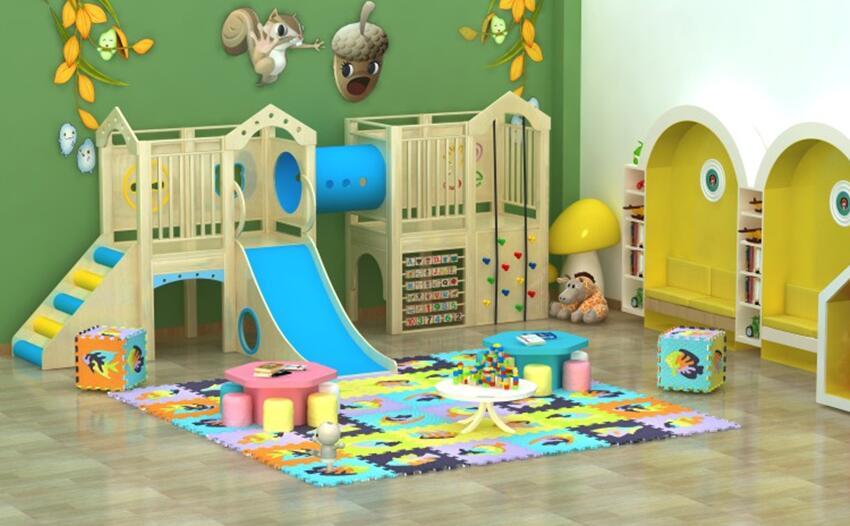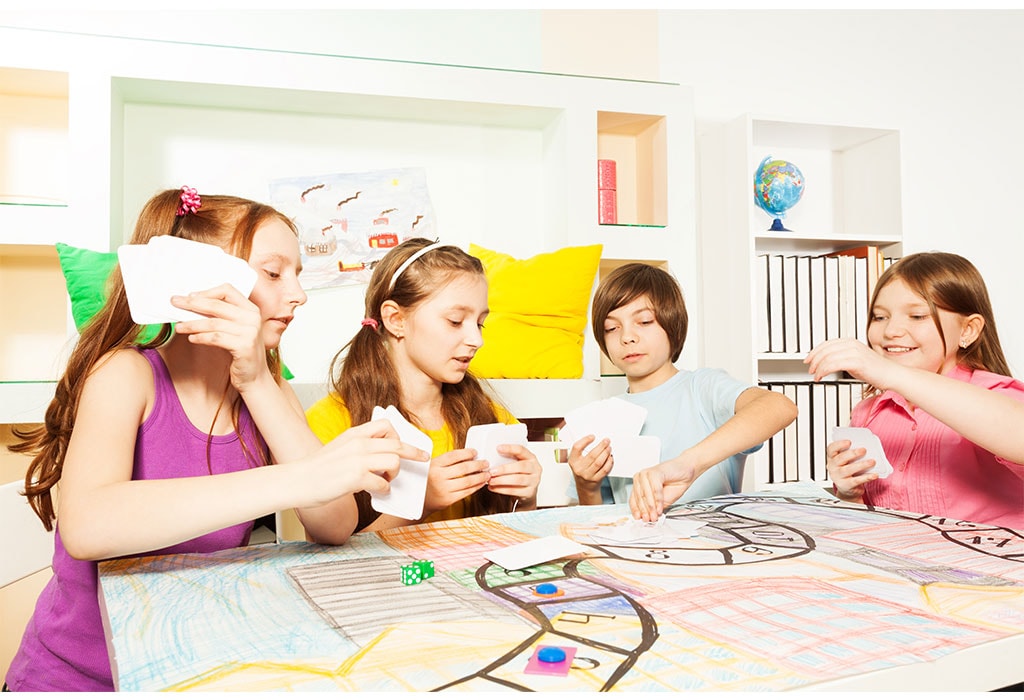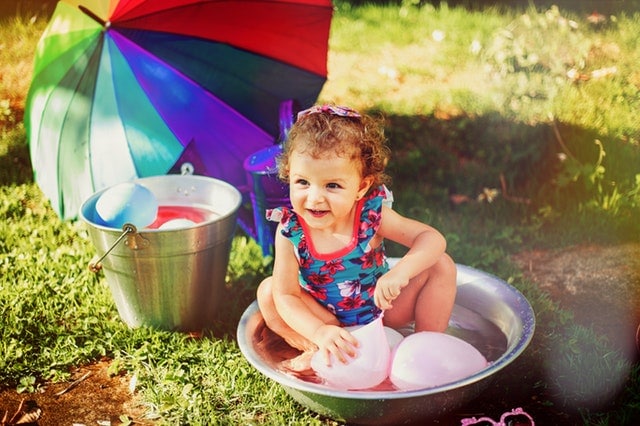Music games for kids are an excellent way for children to express their creativity, have fun, and develop their social skills. Some of those games will also help you teach some basic musical concepts like rhythm or notation to a class of young students. Here are some fun music games you can play with children of all ages.

The Benefits of Music Games
Several studies have shown the benefits of musical education. We recommend using games because they make music accessible to children regardless of their age or musical knowledge. Here is why playing music games is essential:
- Musical education contributes to brain development. Studies have found that students who receive musical education perform better with tasks that involve memory or language skills.
- Music games can improve hand-eye coordination. Playing a musical instrument helps refine different fine motor skills.
- A study found that musical education contributed to higher IQ scores in six-year-old children and helped children perform better on tests.
- Another study found a link between musical education and children developing better reading skills and a more extensive vocabulary.
Top Seven Music Games
Here are different music games for kids you can play at home or introduce in the classroom.
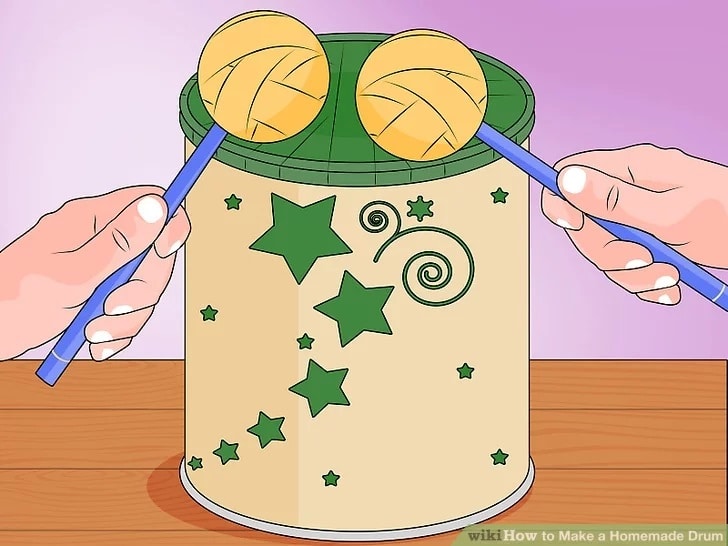 Source: Wikihow
Source: Wikihow
You can use these illustrations to get a better idea of the different steps to follow. Homemade drums are a great way to talk about recycling and to introduce basic rhythms in music class. Children will have fun making different sounds by striking the containers with the drumsticks or the palm of their hands. You can turn the game into a social activity by having children form a small drum orchestra and play simple rhythms together or play along to their favorite songs.
The homemade drums are a fun way to introduce the concept of rhythm. Young children will have fun making noise with their drums, and older students will want to compare the sounds they can make with different types of containers. They can also experiment with striking the middle and the sides of their drums to create different sounds.
| What you need: | |
| – Different empty containers, like coffee containers or cardboard boxes | |
| – Construction paper | |
| – Tape | |
| – Pencils |
How to play:
- Cut pieces of construction paper that match the size of the openings on the different containers.
- Use tape to seal off the different containers.
- Crumble a piece of construction paper and use tape to create a ball on the tip of the pencils to create drumsticks
- Decorate the drums with paint or stickers.
 Source: Pinterest
Source: Pinterest
Freeze dance is a fun way for kids to show off their dance moves and to learn new moves from each other. It’s also a great opportunity to discover music from different genres. The game helps children develop their motor skills. You can discuss some of the pauses you see when the children freeze and ask them to talk about their dance moves.
You can introduce different variations of this game, such as musical chairs, or a version where children fall down on the floor when the music stops.
It’s a fun game that will keep kids busy on a rainy afternoon, and you can start playing right away with this pop playlist on Spotify.
| What you need: | |
| – Something to play music | |
| – A playlist |
How to play:
- Play a song
- The children dance
- Stop the music
- The children have to freeze and maintain their pause
- Make the game competitive by eliminating the children who don’t freeze on time
 Source: Balay
Source: Balay
The clapping game is ideal for music class because you can adjust the difficulty of the game. Young students can learn about the 4/4 time signature with this game, and older children can use this game to explore complex rhythms and learn to analyze what they hear.
| What you need: | |
| – Some songs and something to play music | |
| – Paper and markers |
How to play:
- Introduce the concept of whole notes and half notes.
- Make the game more complex for older children by talking about quarter and eight notes.
- Demonstrate how to clap along to the beat with different time signatures.
- Introduce a basic 4/4 time signature and have kids clap along.
- Play a song and have the children copy the time signature by clapping.
- Draw a time signature and have the children clap.
- Clap a time signature and have the children draw what they hear.
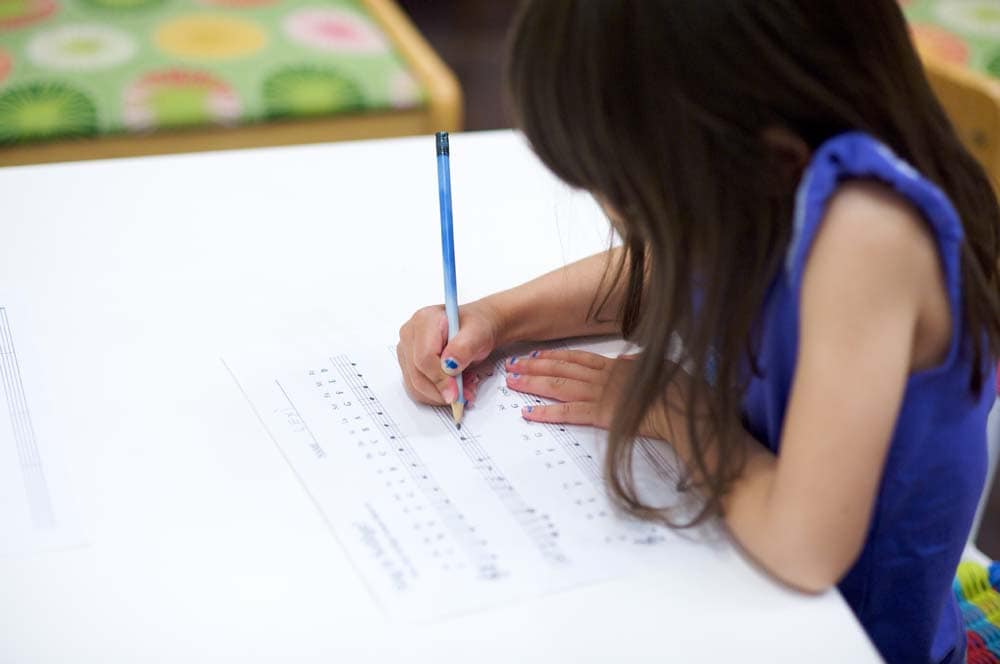 Source: Sagemusic
Source: Sagemusic
This game is a fun and original way of introducing the concept of musical notation. Children have to listen attentively to learn to recognize different notes and get to use their creative side to write a melody. You can make the game more challenging for older students by introducing more notes.
| What you need: | |
| – Paper | |
| – Markers | |
| – A flute or xylophone |
How to play:
- Introduce different notes and their corresponding colors. We recommend introducing four or five different notes for young students.
- You can color-code the instrument with the marker.
- Write a basic melody using the color-coded system and play it on the instrument.
- Play a simple melody on the instrument and have the students write the notes they hear.
- Each student can create their own melody with the color-coded system and play it.
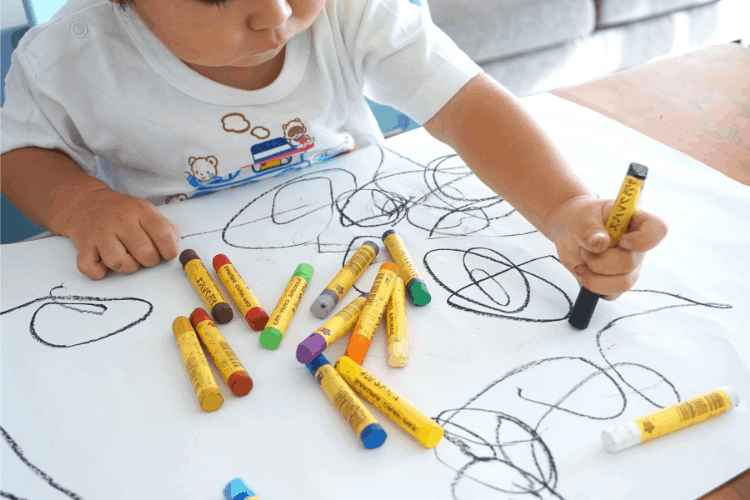 Source: Canva
Source: Canva
It’s an activity that encourages creativity and independent thinking. It also emphasizes the emotional aspect of music. You can keep the sessions short for young children, or use this game to introduce different genres of music. Older students can use more advanced vocabulary to describe the songs while young students will have fun drawing.
| What you need: | |
| – Different songs | |
| – Paper, pens, markers, etc. |
- Have the children listen to a song.
- Take turns to describe what you hear.
- You can use the game to introduce vocabulary linked to music.
- You can choose to focus on emotions and have children describe how a song makes them feel.
- Children can talk about the images that come to mind when they hear the song.
- Children can draw while listening to music to express how the song makes them feel.
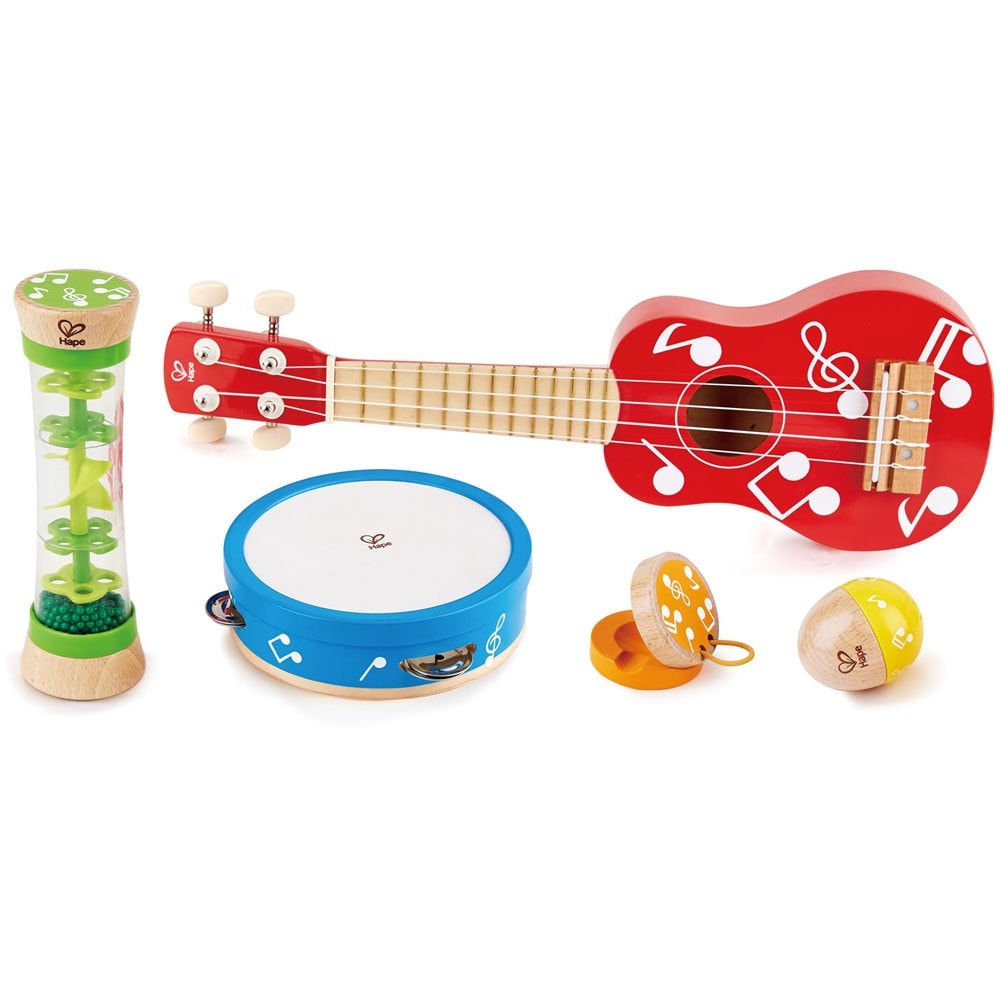 Source: Educational Toys Planet
Source: Educational Toys Planet
This game is a fun way to learn to recognize different instruments. You can keep things simple for young students and use the game to introduce a few common instruments or make the game more challenging and introduce a wide range of instruments.
You can use this world music playlist to have your students develop an appreciation for different musical genres and discover new instruments.
| What you need: | |
| – Clips or songs with different instruments. | |
| – A playlist with different songs. | |
| – Instruments or images of instruments. |
How to play:
- Play short clips where children can hear specific instruments.
- Use images of instruments or instruments to introduce their names.
- Have children listen to clips or songs and ask them to identify the instruments they can hear.
 Source: Brisbane Kids
Source: Brisbane Kids
Musical balloon is a fun game you can use to get children to move to the music. Shy children are often hesitant about dancing, and this game is a fun alternative. Bouncing the balloon keeps them moving, and the random element of the game makes it exciting to play.
| What you need: | |
| – Some music | |
| – Some balloons |
How to play:
- Play a song.
- Ask the children to grab a balloon and keep bouncing it in the air.
- When the music stops, the children have to freeze.
- The aim of the game is to hold a balloon when the music freezes.

